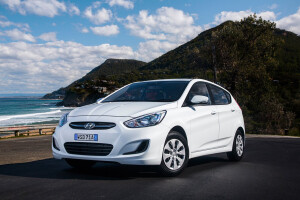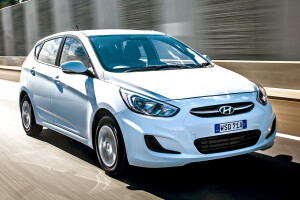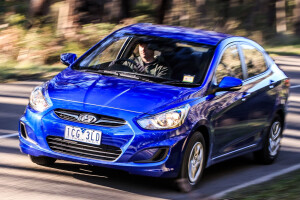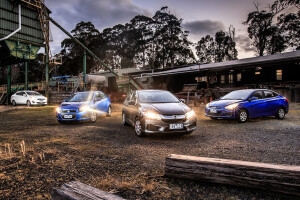Latest Review

2019 Hyundai Accent Sport range review
Renamed the Accent Sport and fitted with the 1.6-litre engine from its more expensive predecessor, the Accent SR, the least costly Hyundai is among the most powerful of city cars.
What stands out?
How zippy the Accent has become, and how much space you get for the money. Renamed the Accent Sport and fitted with the 1.6-litre engine formerly reserved for the more expensive Accent SR, the least costly Hyundai is among the strongest of city cars, and it is bigger than most. Indeed, it is only slightly smaller than the Hyundai i30 and Elantra. The Accent is backed by a five-year warranty, and can be had as a five-door hatch or a four-door sedan.
You can also read our review of the Accent Active and SR that this car replaced.
What might bug me?
Getting comfortable in the driver’s seat: you can adjust the steering wheel for height but not for reach.
That you can't listen to music stored on CD - there's no player.
The small touchscreen. It’s only 5.0 inches in diameter, and so it doesn’t have much real estate for displaying Apple CarPlay icons or telling you which tune is playing on the radio.
What body styles are there?
Five-door hatchback and four-door sedan.
The sedan is about 15 centimetres longer than the hatch but has no more space for passengers: all the extra length goes into the boot.
All Accents are front-wheel drive, and the Accent is classed as a light car, lower priced.
What features do all Accents have?
A sound system with a radio, Aux and USB inputs, Bluetooth phone connectivity and audio streaming, and four speakers, controllable from a 5.0-inch touchscreen.
Support for Apple CarPlay, which lets you display some apps (including maps) from your iPhone on the car’s touchscreen and control them from there.
Cruise control.
Height adjustment for the steering wheel, which carries controls for the audio and cruise control systems. Height adjustment for the driver’s seat, and seatbelt reminders for all five seats.
Air-conditioning, and power windows. Cloth seat trim.
Sixteen-inch alloy wheels (which don’t need plastic trim caps to look nice), and a full-sized spare wheel.
Six airbags. Anti-lock brakes, and electronic stability control – which can help you control a skidding or sliding car. (For the placement of airbags, please open the Safety section below.)
The Accent is covered by a five-year, unlimited kilometre warranty.
Which engine uses least fuel, and why wouldn't I choose it?
Only one engine is available in the Accent Sport, a 1.6-litre four-cylinder. On the official test it uses 6.6 litres/100km in auto form, and a little less with a manual gearbox.
This is the engine formerly reserved for the more expensive Accent SR. Hyundai calls it a 1.6 GDi engine, for gasoline direct injection (a relatively new and sophisticated method of delivering fuel for improved efficiency).
It offers you about 35 per cent more power than the 1.4-litre engine in the former Accent Active. That is plenty around town, and enough for relaxed highway use.
You can have it with a six-speed manual gearbox, or a six-speed automatic. (Where the former Accent Active used a CVT auto, the Accent Sport has a conventional auto like the former SR.)
(Power outputs and all other Hyundai Accent specifications are available from the Cars Covered menu, under the main image on this page.)
What key features do I get if I spend more?
The only thing you can spend more for on an Accent Sport is automatic transmission, which adds about $2000 to the showroom price.
If you choose the hatch you also get a rear windscreen wiper.
Does any upgrade have a down side?
No, except that Accent Sport autos use a wee bit more fuel than the manuals.
White and yellow are the only standard colours, with the other four costing extra.
How comfortable is the Accent?
The Accent Sport presents well inside, with an unusual, golf-ball like dimpled texture on top of the dash and well laid out switches and buttons. It’s all very basic but logically presented.
The seats feel soft and spongy, and once moving the suspension feels that way too, so that you are well looked after when driving around town.
The sound system only has four speakers and the sound is more about making noise than musicality.
It is at highway speeds, or on long trips, when you wish that the seats supported the middle of your back more effectively and that less tyre noise intruded into the cabin – the Accent’s tyre roar is quite loud on coarse surfaces.
The Accent Sport’s 1.6-litre engine is almost as powerful as the engines of some larger, and more expensive, small cars, and so it feels quite perky in the compact and lightweight Accent body.
Around town, acceleration is brisk. At highway speeds the engine does the job comfortably enough but it gets noisy and a bit rough if you ask it to work hard.
The six-speed auto gearbox shifts cleanly and responds well when you push the accelerator.
What about safety in a Hyundai Accent?
The Accent Sport has anti-lock brakes, stability control, six airbags, daytime running lights, and seatbelt reminders on all seats.
The airbags are in the usual places: one ahead of each front-seat occupant; one outside each front occupant to protect the pelvic and chest area from a side impact; and side-curtain airbags running down the length of the cabin to protect the heads of front and rear occupants from a side impact.
Crash avoidance aids such as autonomous emergency braking are not available on an Accent. (Auto-braking systems use sensors to scan the road ahead, and can apply the brakes automatically to prevent you from crashing into someone in front.)
The Australasian New Car Assessment Program (ANCAP) has rated the Accent’s safety at five stars, most recently in August 2011.
I like driving - will I enjoy this car?
The rorty engine in the Accent Sport makes zipping away from traffic a fraction more enjoyable than it would be in some similarly priced alternatives.
That said, the Accent is more about value motoring than having fun. It is honest but basic, and won't tickle your driving senses as enticingly as a Mazda2 or Renault Clio, for example.
Drive with vigour and there is lots of noise to go with the zip - and unfortunately, it’s not a particularly pleasant noise.
While the auto transmission is quick to slot down a ratio or two when you press the accelerator, it is just as quick to change back up when you lift off – rather than assessing the driving conditions and holding the lower gear when that’s helpful, as smarter gearboxes do.
You can hold gears manually, however, using the manual override built into the gated shifter.
As in previous Accents the steering in all models feels dull, especially through gentle bends and at other times when using the wheel near its centre position.
If you try to perform a fast U-turn the power steering will load up from time to time, making it harder than usual to turn the wheel.
The Accent Sport now has the bigger 16-inch tyres formerly reserved for the SR. Notwithstanding the better grip, the Accent’s steering and soft-ish suspension aren’t up to the zip of the engine.
Roadholding is fine for tooling around town or cruising in the country, albeit with some leaning of the body through turns.
Ramp up the pace and the Accent’s limits soon become apparent.
How is life in the rear seats?
By light-car standards there is good leg room and head room, although adults will find it a bit tight in the back and those taller than 180cm may find their head grazing the roof. The longer roof of the hatchbacks translates to an extra 13mm of rear head room.
The rear seatbacks are unusually high, which gives good support to the upper back.
While there are three seatbelts, the middle seat is a lot less comfortable than those outside it, with a higher position and no side-support.
There are no rear air-conditioning vents.
Cabin storage in the rear is light-on, too: there are no door pockets, and a seatback pocket only on the left-hand side.
How is it for carrying stuff?
The boot on the Accent Sport Hatch is quite accommodating, with a fairly wide floor, although there is a large lip to load luggage over. Rated capacity is 370 litres – that is a lot of space for a car at this price, and a match for many cars a size bigger. The 60-40 split-fold rear seat setup allows long items to extend into the main cabin if necessary.
The longer body on the sedan translates to about 30 per cent more luggage space in the boot.
However, with rear seats folded it remains easier to load awkward items such as bicycles into the hatchback.
Where does Hyundai make the Accent?
All Accents are made in South Korea.
What might I miss that similar cars have?
A reversing camera, which is standard on the Toyota Yaris and Honda Jazz, for example.
Active safety features, such as automatic emergency braking. This is standard on the Mazda2 and the smaller Kia Picanto, and available on the Yaris and Suzuki Swift, for example.
Among other light cars you might consider are the Renault Clio and Kia Rio.
If you could be happy with less space, consider a Picanto, Holden Spark, or Suzuki Ignis.
I like this car, but I can't choose which version. Can you help?
The Accent Sport hatch is arguably the pick for its easier parking (it is shorter than the sedan) and greater flexibility for loading big items of cargo. Go for the auto transmission, too: it teams nicely with the 1.6-litre engine, and an auto Accent will be easier to sell.
Are there plans to update the Accent soon?
The current shape Accent went on sale in 2011 and received minor updates and tweaks (including dropping the diesel engine formerly available) in 2012 and 2013.
About September 2015 Hyundai removed the smaller i20 from its model range. The mid-price Accent Elite was dropped also. Accent Active models were given a smaller, 1.4-litre, engine with a CVT auto gearbox option and became the least costly Hyundais available, offered alongside the more expensive, 1.6-litre, Accent SR.
Late in June 2017 Hyundai reduced the Accent range to a single hatch and sedan, replacing the 1.4-litre Active and 1.6-litre SR with the Accent Sport. The Accent Sport uses the direct-injected engine from the SR, and adopts its wheel and tyre package, its suspension, and most of its feature set (including cruise control). Unlike the hatch-only SR, you can have the Accent Sport as a sedan also.
Late in September 2017 Hyundai gave the Accent’s nose and instruments a subtle restyle, for the 2018 model year.
A new-generation Accent is expected some time in 2020, though Hyundai is yet to confirm this.
Score breakdown
Things we like
- Perky performance
- Roomy for the price
Not so much
- Dull dynamics
- Small touchscreen
- No reversing camera
News
-
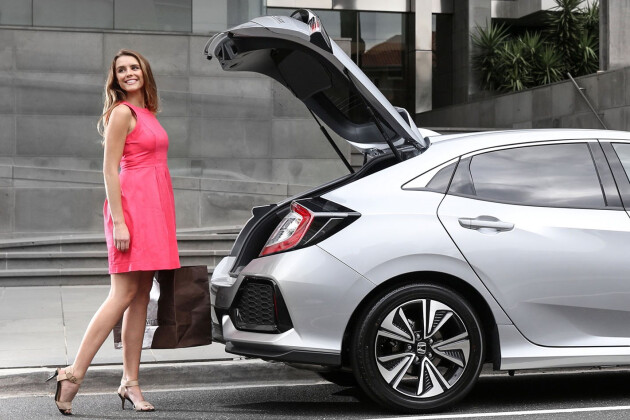 Advice
AdviceBoot sizes of Australia's most popular hatchbacks
Not all hatchbacks are created equal when it comes to the cargo department
-
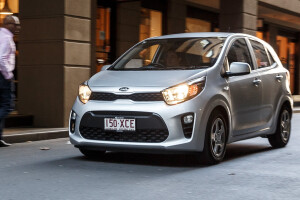 Advice
AdviceAustralia’s 10 cheapest cars of 2018
Here are 10 cars straight from the factory that offer a new-car experience on a used-car budget
-
.jpg) Advice
AdviceAustralia’s 12 cheapest cars of 2017
On the hunt for a new car but only have a used-car budget? Here are 12 cars straight from the factory that retail for $16,000 or less.
-
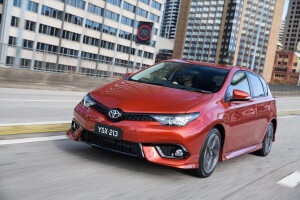 News
NewsTop 10 Passenger Cars – September 2017
The best-selling passenger cars from the month of September
-
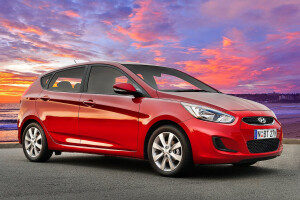
Hyundai Accent Sport tweaked for 2018 model year
-
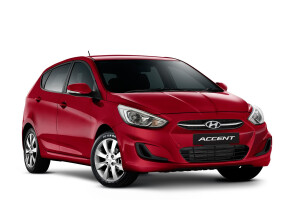
2017 Hyundai Accent Sport announced
-

Mazda 2 Maxx vs Hyundai Accent Active – Which Car Should I Buy?
-
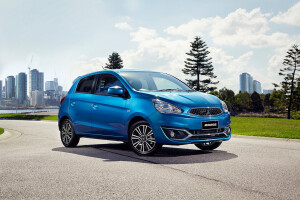
Australia’s cheapest cars: 10 new cars under $15,000


.jpg)
